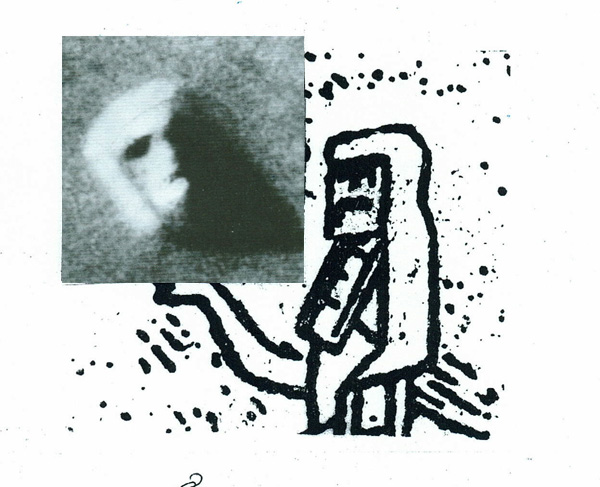Other NASA photographs
reproduced in the book showed a lake shore, a water channel outfitted with
piers, the remains of a pentagonal structure, of roads leading to
elongated buildings.
Ignoring The Evidence
While in my writings and lectures I emphasized the structural evidence, it was the Face that captured the interest and imagination of various individuals and groups. NASA, on its part, ignored all the evidences in its subsequent missions, focusing instead on geology. It was only as a result of a public outcry that NASA finally directed an orbiter, Mars Pathfinder, to take a look at the Face – but only after a dust storm that covered most of the planet, and after fiddling electronically with the photographs to end up with a fuzzy picture. (Some of the serious work to uncover the distortions was done by the Meta Research Institute under the leadership of the astronomer Thomas Van Flandern). Yet, now distorted or not, the fact remains that the unusual rock is still there, and that it clearly showed a human-like face in the 1970’s photographs.
My conclusions were and still are that intelligent beings akin to us had been to Mars thousands of years ago. The Sumerians knew who they were: The same Anunnaki from Nibiru who had come to Earth and maintained a way-station on Mars.
The Cylinder Seal Depiction
The Sumerian information is
provided in texts on clay tablets; and in pictorial support of my
conclusions I included in my books the rendering of a depiction on a 4,500
years-old cylinder seal, now kept in the Hermitage Museum in St.
Petersburg in Russia (Fig. 91 in Genesis Revisited):

It shows an astronaut (“Eagleman”)
on Earth (indicated by the seven dots, Earth being the
seventh planet counted from outside into the solar system, accompanied by
the Moon’s crescent) greeted by an astronaut (“Fishman”, equipped
for splashdowns) on Mars (the sixth planet when our solar system is
entered from afar), and a spacecraft with extended panels and antennas in
the heavens between them.
The “Face – 4,500 Years Ago?
It was a discerning fan,
Richard L.C. of Manheim, PA, who drew my attention to the similarity
between the Face in the NASA photographs (yes, there were several ones) as
depicted in Genesis
Revisited and the helmeted face of the astronaut on Mars as
depicted on the Sumerian seal; the latter has been enlarged for better
comparison:

Though one is shown full face and the other (in the seal) in profile, the similarity is nothing short of uncanny!
Could the Sumerians have known of the Face on Mars 4,500 years ago?
The Yes answer is detailed in my latest book, The Lost Book of Enki.
It is time to start looking for the Real evidence Mars.
ZECHARIA SITCHIN
© Z. Sitchin 2004
Reprinting permitted on condition that the following statement is made:
© Z. Sitchin 2004
Reprinted with Permission.